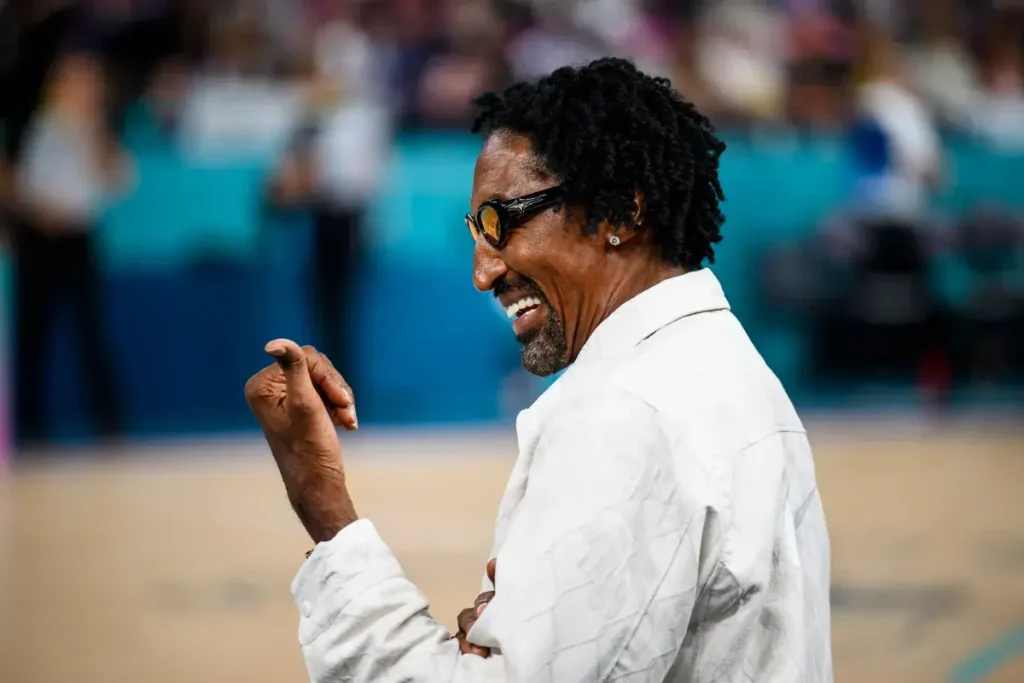Scottie Pippen’s Legacy and His Place in Modern Basketball
Chicago Bulls legend Scottie Pippen recently reflected on how his versatile skill set would translate to today’s NBA, confidently asserting that he would thrive in the contemporary game. During his illustrious career, Pippen established himself as one of basketball’s most complete players—a defensive stalwart capable of shutting down the opposition’s best perimeter threat while simultaneously creating scoring opportunities for himself and teammates. This two-way excellence earned him seven All-Star selections and six NBA championships alongside Michael Jordan. Despite these accomplishments, Pippen has often been cast in Jordan’s shadow, his contributions sometimes overlooked in the narrative of the Bulls’ dynasty. The Hall of Fame small forward served as the quintessential second option on those championship teams, yet many basketball historians argue that his impact extended far beyond what traditional statistics captured.
When asked about his potential fit in today’s faster-paced, spacing-oriented NBA, Pippen expressed unwavering self-assurance: “I’d do very well. The game has changed, sure—it’s more up and down now—but my style fit that kind of play even in the ’80s and ’90s. I don’t think it would be a big challenge.” This confidence isn’t merely retrospective bravado but rooted in the reality that Pippen’s game featured elements that have become essential in modern basketball. His exceptional court vision, transition playmaking, defensive versatility, and ability to guard multiple positions align perfectly with what teams currently value. While playing in an era that emphasized mid-range shooting and post play, Pippen displayed flashes of the positionless basketball that defines today’s game, often initiating offense as a point forward while defending the opposition’s most dangerous scorer regardless of position.
Pippen’s career three-point shooting numbers—32.6% on 2.5 attempts per game—might appear modest by modern standards, but they require important context. The three-point shot wasn’t emphasized during much of Pippen’s career as it is today, with teams prioritizing mid-range jumpers and interior scoring. Contemporary player development focuses intensely on perimeter shooting, suggesting that Pippen, with his work ethic and adaptability, would likely have developed into a more prolific long-range shooter had he played in the current era. His natural shooting touch, combined with the spacing benefits of today’s offenses, would have created more open opportunities for him to showcase his abilities. Furthermore, the evolution of offensive schemes would have maximized Pippen’s playmaking abilities, potentially allowing him to serve as a primary ball-handler in pick-and-roll situations—a role in which his passing vision and decision-making would have thrived.
Perhaps most translatable to the modern game is Pippen’s defensive prowess. In an era where versatile defenders who can switch across multiple positions are invaluable, Pippen’s defensive instincts and physical tools would make him an elite stopper. His combination of length, lateral quickness, anticipation, and basketball IQ allowed him to disrupt opposing offenses in ways that advanced metrics now quantify and teams explicitly value. Pippen could seamlessly switch from guarding quick point guards to physical power forwards—a skill particularly valuable in today’s switch-heavy defensive schemes. His off-ball awareness, highlighted by his ability to execute timely help defense and generate steals (he ranks eighth all-time in career steals), would be equally impactful in current defensive systems that emphasize creating turnovers and transition opportunities.
What makes Pippen’s case for modern relevance particularly compelling is that he was, in many ways, ahead of his time. Before the term “point forward” became commonplace, Pippen was fulfilling that role—bringing the ball up court, orchestrating the offense, and making decisions that typically fell to point guards. His 6’8″ frame combined with guard-like handling skills presaged the current trend of multi-dimensional wings who function as offensive hubs. In today’s positionless basketball landscape, where versatility is paramount and traditional positional designations increasingly irrelevant, Pippen’s varied skill set would allow him to excel in multiple roles within an offense while anchoring a defense. The Bulls’ forward didn’t just adapt to the triangle offense—he helped elevate it through his basketball intelligence and selfless play, qualities that would make him an ideal fit for modern motion-based offensive systems.
While hypothetical cross-era comparisons always involve speculation, Pippen’s claim that he would rank “easily among the best” in today’s NBA carries substantial merit. His game embodied qualities now considered essential: defensive versatility, playmaking from the wing position, transition excellence, and basketball IQ that allowed him to impact games in countless ways beyond scoring. Perhaps most significantly, Pippen’s willingness to subjugate his individual talents for team success—evidenced by his acceptance of a secondary offensive role despite possessing first-option abilities—represents a mindset particularly valuable in an era of superteams and collaborative star power. As basketball continues to evolve toward positionless play that values skill diversity over specialized roles, Pippen’s legacy as one of history’s most complete players only grows more relevant, suggesting that his confident assessment of his place in today’s game is not merely pride but a reasonable conclusion based on the enduring qualities of his remarkable skill set.


